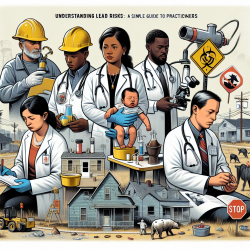Introduction: Embracing Complexity in Public Health
In the realm of public health, particularly concerning food-related issues, traditional approaches have often been siloed, focusing narrowly on specific problems like obesity or foodborne illnesses. However, a groundbreaking study titled Food, health, and complexity: towards a conceptual understanding to guide collaborative public health action challenges this status quo by presenting a conceptual model that illustrates the interconnectedness of various food-related health issues.
Understanding the Conceptual Model
The study conducted by Majowicz et al. (2016) introduces a model that connects five critical public health issues: infectious foodborne illness, food insecurity, dietary contaminants, obesity, and food allergy. This model identifies 49 shared drivers and 227 interconnections, revealing how these issues are interrelated through common factors such as socioeconomic status, food availability, and individual food intake.
Practical Applications for Practitioners
For practitioners, this model serves as a powerful tool to enhance their approach to public health interventions. Here are some actionable steps:
- Identify Shared Drivers: Use the model to recognize shared drivers among different health issues. For instance, socioeconomic status impacts all five issues, highlighting the need for targeted interventions that address economic disparities.
- Collaborate Across Sectors: Encourage collaboration between different public health sectors. Practitioners can work together to develop comprehensive strategies that consider the ripple effects of interventions across various health domains.
- Anticipate Unintended Consequences: Before implementing interventions, use the model to anticipate potential unintended consequences. For example, promoting urban gardens to improve food security might inadvertently increase exposure to dietary contaminants.
- Engage Non-Traditional Stakeholders: Involve stakeholders from diverse fields, including environmental science and economics, to create holistic solutions that address the complex web of factors influencing public health.
Encouraging Further Research
While the model provides a robust framework, it also opens avenues for further research. Practitioners are encouraged to delve deeper into specific drivers and explore their unique impacts on different health issues. This can lead to more tailored interventions that effectively address the root causes of health disparities.
Conclusion: A Call to Action
By embracing a systems-thinking approach, public health practitioners can transcend traditional silos and develop more effective interventions. This model not only highlights the complexity of food-related health issues but also provides a roadmap for collaborative action. Let's harness these insights to create healthier communities and better outcomes for children.
To read the original research paper, please follow this link: Food, health, and complexity: towards a conceptual understanding to guide collaborative public health action.










